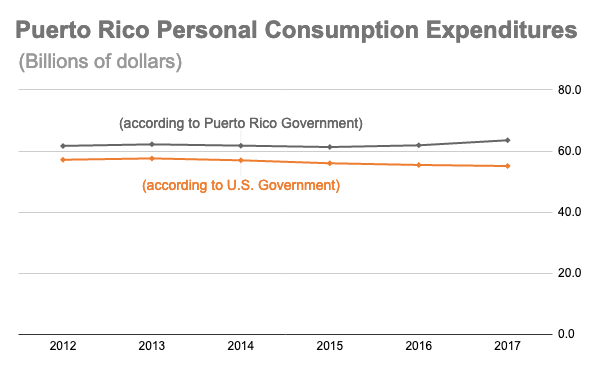Op-Ed: Was the Puerto Rico Planning Board right?

For about 30 years, observers have questioned the reliability of the macroeconomic statistics that the government of Puerto Rico prepares through its Planning Board.
The technical questions about the quality of these statistics have been numerous, diverse, and persistent. On occasion, these questions have played a leading role in creating the conditions for Puerto Rico’s fiscal, economic, and credit crisis, and in the congressional, judicial and political debates to address the crisis.
To address these questions, several administrations have sought to involve the U.S. government in the preparation of Puerto Rico’s macroeconomic statistics. This makes sense, given that the preparation of the U.S. macroeconomic statistics is a federal function, executed centrally from Washington, through the U.S. Bureau of Economic Analysis (BEA).
In fact, at the beginning of this century, for the first time, the federal government began preparing macroeconomic statistics for its territories, Samoa, Guam, Mariana Islands, and the U.S. Virgin Islands.

In the case of Puerto Rico, one of the main questions has always been whether the official macroeconomic statistics have excluded certain economic activities of great value. For example, for a long time, economists on the island have asked: how can economic growth be sluggish, when shopping centers are still crowded with avid shoppers?
As a result, an expectation was created that if Puerto Rico’s economic statistics had been correctly computed, then we would come to realize that Puerto Rico’s economic situation was much more favorable than what the official statistics suggested.
In fact, these arguments were eventually used by bondholders in federal court to establish that Puerto Rico could actually repay more of its debt than suggested by the official macroeconomic statistics.
Last month, the U.S. government published for the first time a series of experimental statistics on various sectors of Puerto Rico’s economy covering the period from 2012 to 2017, which allow us to begin answering these questions. Was the Puerto Rican economy underestimated or was the Planning Board right?
Well, it turns out that the answer is neither one nor the other. The new statistics do not reveal a much larger economy that had not been measured previously. In fact, quite the opposite: personal consumption expenditures, one of the main components of Puerto Rico’s economy, were actually 9% lower than previously published by the government of Puerto Rico.
This does not mean that there are no economic activities excluded from these statistics. Quite the opposite. It means that so far, the U.S. government has possibly not, much like Puerto Rico’s government, been able to find a mechanism to capture and measure the considerable underground economy that keep some sectors buoyant in Puerto Rico, despite the crisis.
Being able to measure the value of these activities is essential to ensure that these sectors contribute equally to financing the government. One way to start measuring these activities is through a Consumer Expenditure Survey, like the one performed annually in the United States, and which has not been undertaken in Puerto Rico in almost 20 years.
On the other hand, in terms of how this variable evolved over the five-year period, the government of Puerto Rico and the federal government reached similar conclusions: personal consumption expenses at constant prices were reduced by an average of more than 1.5% per year between 2012 and 2017. This suggests that the Planning Board was not as wrong in its statistics, as the citizenry were led to believe.

This should not be a surprise: the reality has always been that the dedicated employees of the Planning Board take every effort to prepare the highest quality statistics they can, against the will at times of politicians who do not understand and despite continuous cuts to the financial and human resources available to this endeavor.
Without a doubt, there have always been many areas of improvement and there have always been technical discrepancies, but the solutions have always been there, in the hands of the Puerto Rican human capital that has been preparing these statistics for decades against all odds.













For a long time, it has been my philosophy that when you criticize official economic statistics, be prepared to offer an alternative. Otherwise, it’s like going from a vacuum to nothing! Although the level of these statistics may be off, you can certainly draw conclusions from the trend. The BEA has started collaborating with PR statistics. They should be aware, as the PR Planning Board well knows, that what stays and is important is GNP and not the GDP, which they are pushing. PR would be better served if the Government were to allocate more resources to the PR Planning Board and if the private sector were to provide accurate and timely data!!!